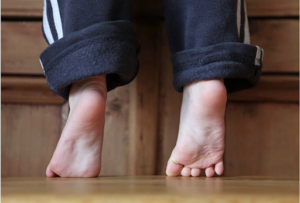
What is toe walking?
Toe walking can be described as walking on the toes or the balls of our feet without heel contact on the ground. It commonly can be described as your child always on their “tiptoes”. Some children with diagnoses such as cerebral palsy, muscular dystrophy, or autism may be seen walking on their toes. If a child is toe walking for an unknown cause, it can be described as idiopathic toe walking. Idiopathic toe walking is characterized by toe walking that is not occurring because of an underlying anatomical or neuromuscular cause. Factors that may play into idiopathic toe walking include;









